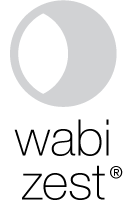It is said that indigo originally came from China to Japan as a medicine. A decoction of indigo root was effective for colds and sore throats. Juice squeezed from indigo leaves was used for skin burns or insect bites. The Japanese used to put a wet cloth soaked in indigo onto wounds, or onto the forehead during a fever. The indigo seeds were consumed as an infusion (an herbal tea) to detoxify the body. The indigo plant was used from root to seed. It was a cure all remedy. Indigo also had antibacterial and vermifuge effects. So in times gone by, the Japanese would store important clothes in “Furoshiki,” flat wrapping cloths made from indigo. These would protect clothes against moths.
Fabric dyed with indigo is strong and does not burn easily. In old Japan, indigo fabric was used as ties for armor and helmets worn in battle.
During the Edo period (1603-1868), indigo fabric usage spread to ordinary people. The indigo fabric was used for a variety of items such as kimonos, curtains, hand towels, furoshiki (wrapping cloths) and work clothes. The fabric became a necessity in daily life.
In the 19th century, the British chemist Robert Atkinson came to Japan. He was impressed by indigo fabric, which was used in so many different ways. He praised the indigo's beauty and called it “Japan blue.”
The beautiful traditional Japanese fabric dyed with indigo is created by a skillful and experienced dyer. Traditional dyeing with the indigo process takes enormous time and effort.
Because the indigo production process depends on fermentation, the color of indigo blue varies slightly from batch to batch. So a dyer needs to take great care of the dyeing process, virtually living with indigo around the clock.
Indigo blue has wide range of colors. In Japanese, there are 48 different names for the various shades of indigo. This is because every naturally dyed indigo blue is unique.
Today in the town of Matusaka in Mie prefecture, beautiful "Japan blue" indigo fabrics are being produced by Miito Orimono, a small company maintaining a five hundred year old tradition. Miito Orimono is the only enterprise in the Matsusaka area still producing "Matsusaka Momen," the traditional cotton fabric dyed with indigo.
A contemporary design compan, Marukawa Shoten - run by Mr Tatsuya Marukawa, works with Miito Orimono to promote this traditional craft and to use this fabric for modern applications.
Take a look at some examples of beautiful Japan blue.




